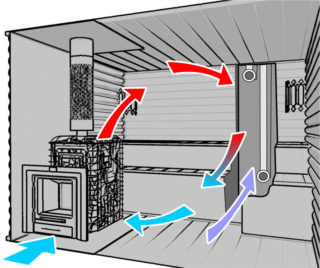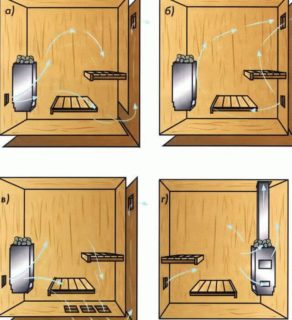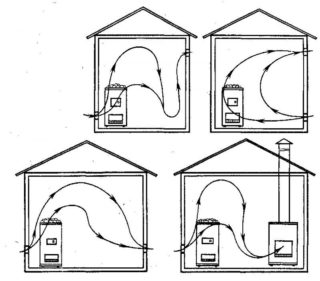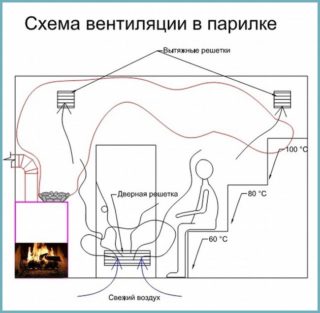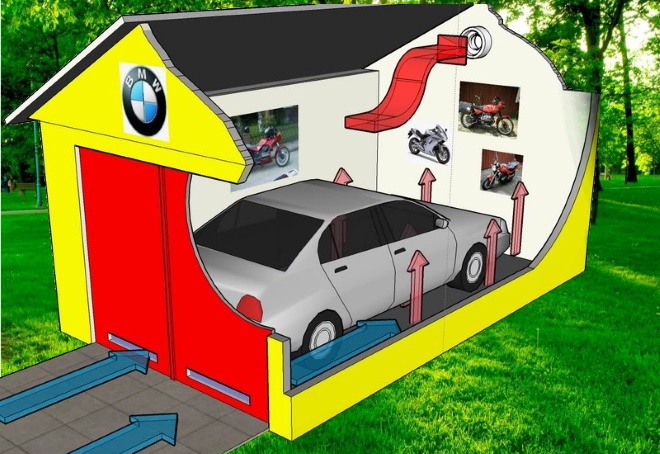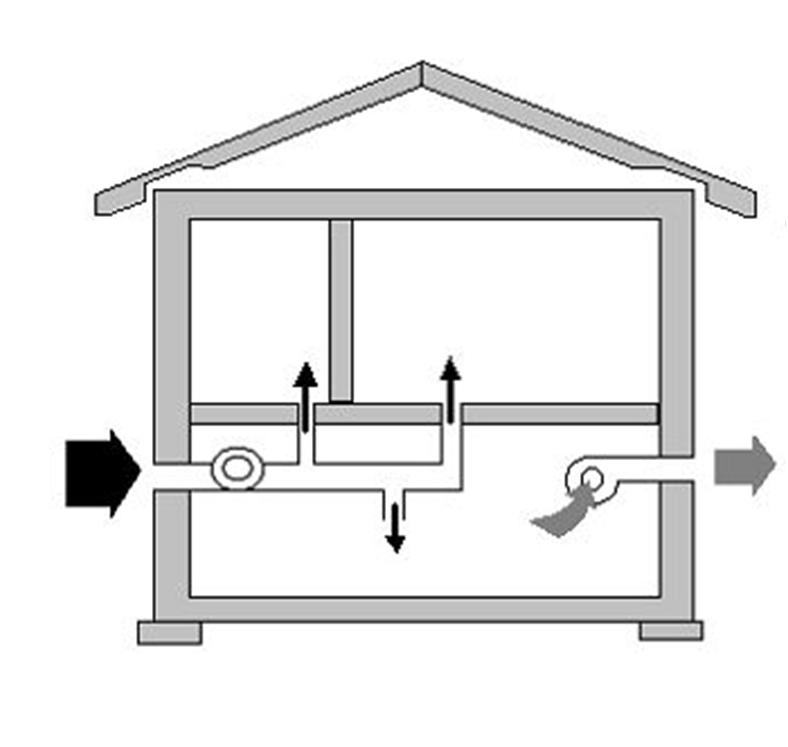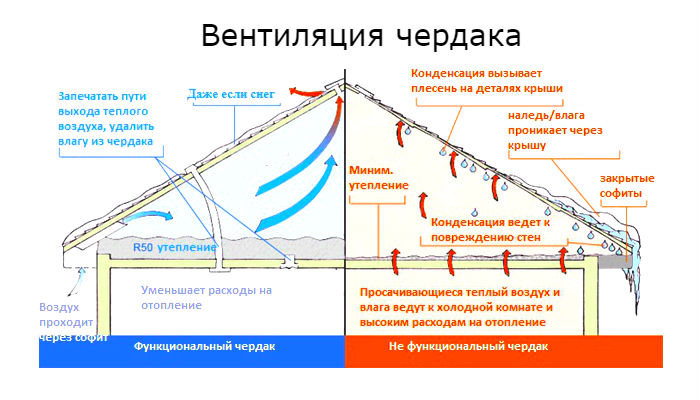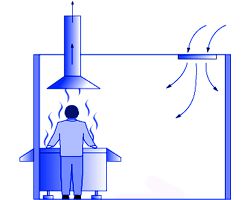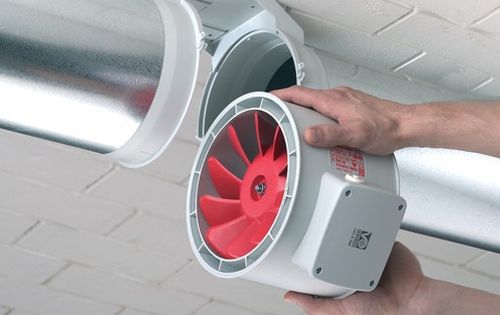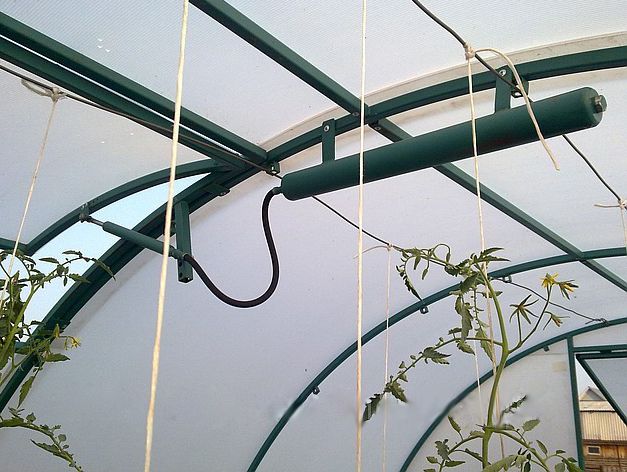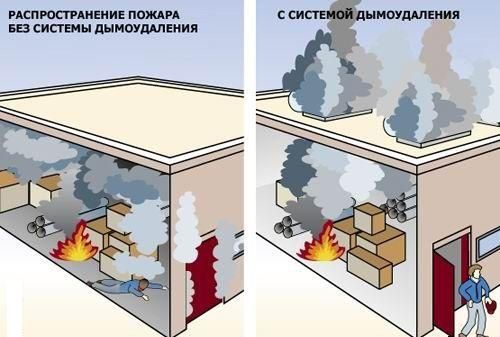What ventilation should be in the bath and is it needed there at all? This question is asked by anyone who has taken up the construction of their own steam room. I will say right away - ventilation is necessary, and not only in the steam room, but also in the sink, dressing room and other rooms. Let's take a look at the air exchange schemes and the subtleties of installing ventilation in different baths.
Appointment of bath ventilation
Oxygen simply burns out when in contact with overheated metal and stones, plus the carbon dioxide that people breathe out also cannot be discounted. As a result, a person enters the steam room with a clear head, and leaves it with a clouded mind, and the lack of oxygen is to blame, and what are the health benefits.
The second no less important purpose of the air exchange system is to remove excess moisture, or, more simply, to dry the room. Whatever you impregnate the wood with, and if you do not dry it during changes in humidity, then a maximum of a year later the tree will begin to rot.
It is no secret that the floor temperature largely depends on the type of foundation under the bath. The trick is that with a reasonable distribution of air flows, you can make the floors in the steam room warm, regardless of the foundation, and without special heating.
The ventilation system design depends on many factors. So, air exchange in a frame bath, in a block bath and in a wooden bath is different. Plus, the layout and size of air ducts and openings play an important role. But first, let's take a look at the types of ventilation systems.
Types of systems
Forced system - here the supply and exhaust ventilation are equipped with electric blowers and hoods (fans). The efficiency of such a system is much higher. In a wooden bath, it is mounted at will, and in frame and block structures this is a mandatory attribute.
Note! The forced air exchange system is also good in that it is not necessary to install wide air ducts here, you can assemble it from plastic pipes for the sewage system, the fans compensate for the relatively small cross-section of the pipes.
Steam room air exchange schemes
Sometimes a vent hole with a latch is made right at the bottom of the door leaf. But in any case, in the absence of a separate ventilation duct, the dressing room should be well ventilated, since the air will come from there.
Option number 1... The extract is done approximately at the same level as the supply. The heated fresh air goes around the whole room and, gradually cooling down, leaves through the hood. A sauna with its dry steam fits this scheme perfectly, but in a Russian bath it works worse.
Option number 2... Used in rooms where one of the walls borders the street.The problem is that when the inflow is far from the stove, cold air spreads across the floor and it will be cool. Therefore, here it is advisable to put a fan on the inflow and turn it on for a short time.
Option number 3... More suitable for frame and block structures standing on a concrete foundation and having concrete floors. Here, a wooden deck with holes is mounted on top of the concrete. If you put a powerful fan on the hood, then hot air, bending around the room, will leave through the floor, thereby heating it.
Exhaust through the blower of the furnace is most often used in a Russian bath. The stove is installed here directly in the steam room, and the inflow is mounted opposite, usually under benches. At the same time, there should be a separate hood in the washing and dressing room, it is undesirable to let everything through the steam room, there is already a lot of humidity there.
Example of arrangement of the system
Note! According to SNiP 41-01-2003, the cross-section of the ventilation ducts is selected at the rate of 24 cm per 1 m of the room, but if you install fans, you can get by with a plastic sewer pipe.
- We start the pipe. A plastic sewer pipe will be the best option for an air duct. The material is not afraid of moisture, plus the price is cheap. Special crowns are used to cut a round hole in a wooden wall.
- Tee. Usually, the inflow is fed into the dressing room, and then a tee and air ducts are installed, go through different rooms.
- Floor heating. For underfloor heating, the upper air intake can be piped to the underfloor. True, it is better to install a fan and a damper here.
- Entrance through the floor. In frame baths and in baths on a columnar foundation, it is convenient to have an inflow through the floor.
- Plug. If you start the inflow through the floor, then do not forget to put a plug, preferably with a mesh, otherwise all the mice will be in the bath.
- Insulation of the pipe. The exhaust pipe must be insulated, otherwise condensation will settle inside and drain through the pipe into the steam room.
- Fans. It is advisable to install fans both on the supply and on the exhaust. But here you need to put extremely moisture-resistant equipment.
It is not difficult to equip ventilation in a small bath, just choose one of the schemes shown above and mount a small piping.

